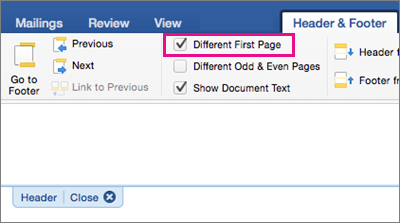How To Get Ms Office For Both Pc And Mac
Using portable ZIP, Jaz, magnetic optical (MO), or other forms of portable media is similar to burning a CD, and, as long as the media device can be used on both the PC and Mac. Using these forms of portable media is an excellent way to transfer any amount of data. Microsoft Office 2019 Home & Business -1 PC/Mac Download Be the first to review this product Create polished documents with the Office applications you know and trust, save them to the cloud, and then edit and collaborate with others in real time using Office Online.
How To Get Ms Office For Both Pc And Mac For Only $9.95 Each
Guest blog by Manoj Raghu, Parallels Support Team In previous blogs, we talked about setting up your Windows virtual machine, tuning it and using advanced functionality. Now let’s take a look at installing Windows-based programs in a Parallels Desktop VM. Although this process is pretty similar to installing programs on a PC, there are a few items I’d like to point out.
So, what do we need to start the third-party program installation in your Windows VM? Right—we need the actual installation image for the program. This image can be in one of the following formats: • A CD or DVD installation disc • An.iso image file, which can be connected to the virtual CD-ROM. • An installation image downloaded from the Internet (preferably from the software vendor’s official website or another trusted source). This usually comes as an.exe image.

Before we start Make sure your Windows VM meets the system requirements for the software you want to install. Each specific piece of software requires a different amount of RAM and video memory, hard drive space, etc. In most cases, you can check program system requirements on the software manufacturer’s website. If you need to change the amount of resources dedicated to your VM, all you need to do is shutdown Windows and make the appropriate changes in your. If you plan to download the installation image from the Internet, make sure no firewalls or Internet security solutions are blocking the download process, especially if the download is an.exe image—I call this “over-security”, but it can help you avoid the occasional virus.
OK, the image has been successfully downloaded. Let’s get it installed! Installing Third-Party Programs With an.Exe Image As you can see, it’s pretty straightforward. Locate the file you’ve just downloaded and double click to start the installation. Then follow the installation wizard to complete the install. Installing Third-Party Programs with CD or DVD Now let’s see how to install a program from a CD or DVD. This is also fairly simple: • Start Windows.
• Insert the CD. • Make sure your virtual CD-ROM is pointed to the real device: Access the → Hardware → CD/DVD 1 and set it to your Mac’s CD-ROM. • In most cases, the AutoPlay dialog will open. Click the option to run or install file and follow the onscreen instructions.
Nothing coming up automatically? No worries—just open Windows Explorer and double-click on the CD-ROM to start the installation. Wait—what if I don’t have a CD-ROM?  Fair question—most modern Macs don’t. In this case, you can use the external CD-ROM or just download the.exe image from the software manufacturer’s website, as outlined above.
Fair question—most modern Macs don’t. In this case, you can use the external CD-ROM or just download the.exe image from the software manufacturer’s website, as outlined above.
Installing Third-Party Programs with an.iso Image • In the Mac menu, click on Actions → Configure • Switch to the Hardware tab • Click on CD/DVD on the left under Connect to select Choose an image file. • Locate the ISO image file in the dialog and click Open. • Close the VM Configuration window.
Reinstall microsoft powerpoint for mac. • Start your VM. The contents of your ISO file are now accessible as a virtual CD/DVD ROM drive inside your VM. Note:It’s recommended to restart your Windows VM after installing any applications.
We hope this blog helped you easily install Microsoft Office and any other software you need in your Windows VM. As always, for more tips, tricks, and support for Parallels Desktop and our other products, be sure to follow the Support team on! 
 Try Parallels Desktop!
Try Parallels Desktop!
Microsoft on Tuesday its new Office 2013 and Office 365 productivity software suites. Lost in the announcement, however, was what (if anything) those suites would mean to Mac users. Macworld spoke to Microsoft representatives to get some clarification.
Microsoft Office for Mac 2011 For starters, Office 2013 doesn’t mean anything to the Mac: it’s for Windows computers only. Office 365, on the other hand, does impact Mac users, but it doesn’t introduce any new features; rather, it’s essentially a new licensing model for Office for Mac. A subscription to Office 365 ($10 per month, or $100 per year) gives you the right to download Office software to up to five computers.